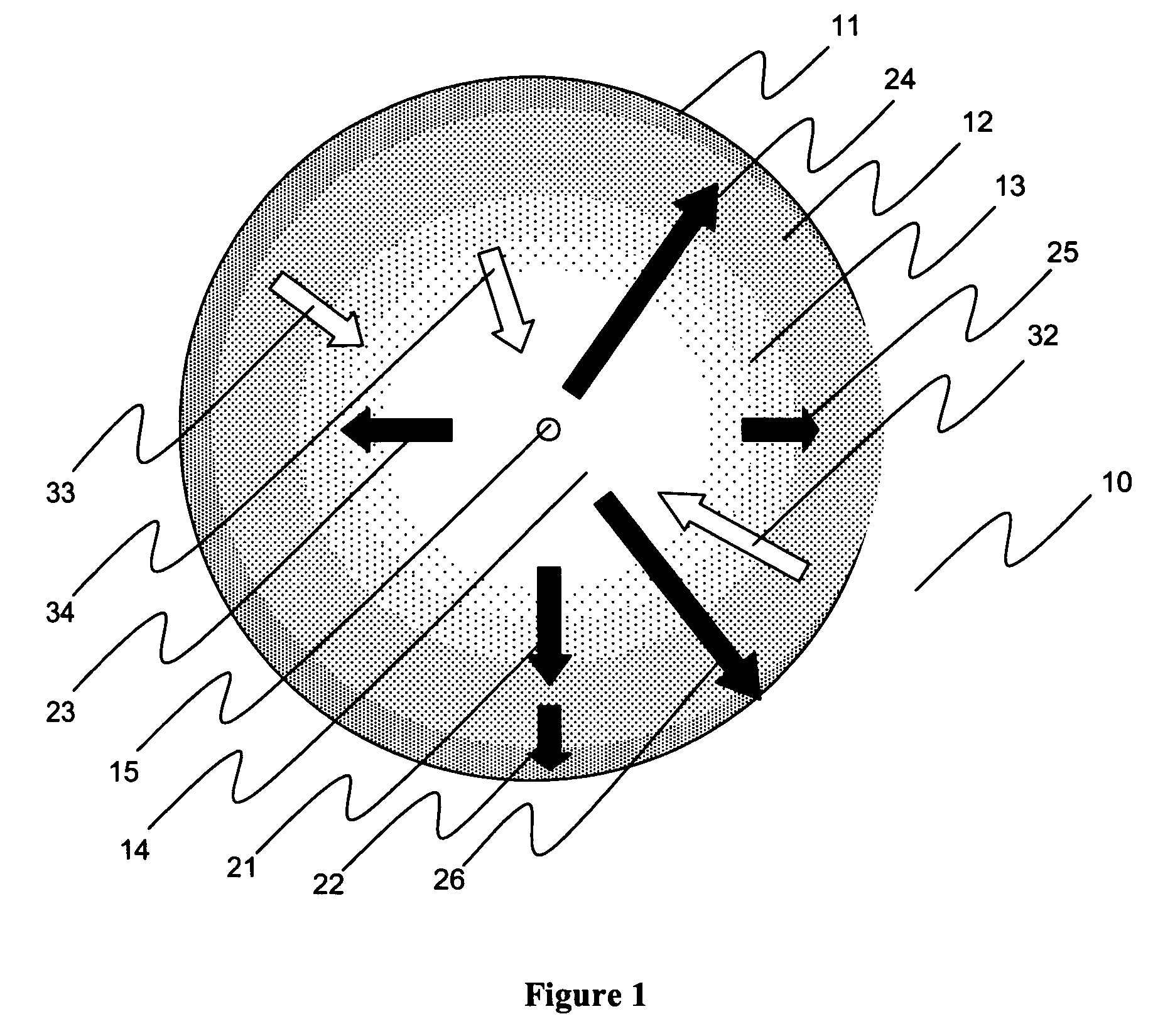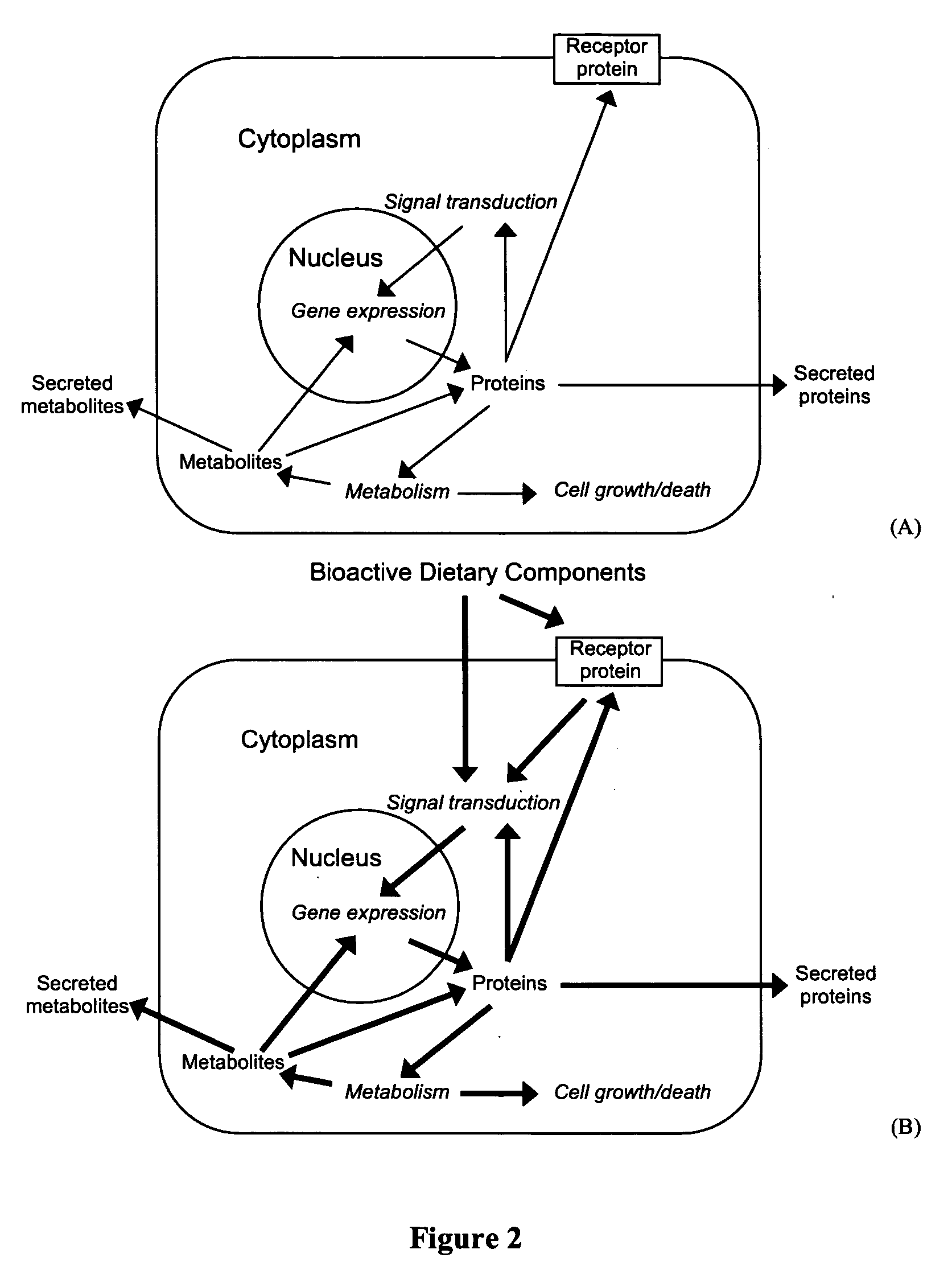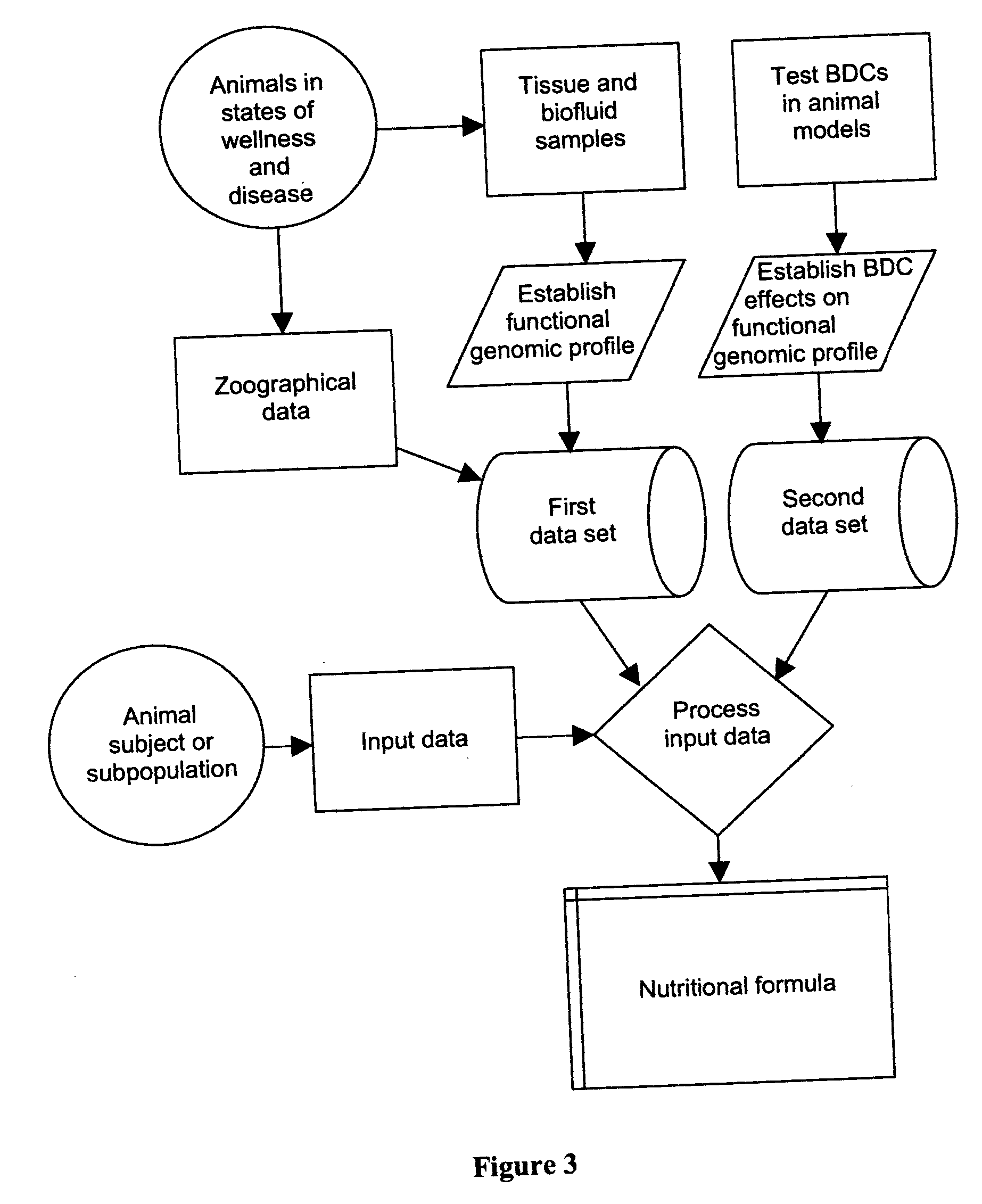Methods and systems for designing animal food compositions
a technology for food compositions and methods, applied in the field of animal nutrition, can solve the problems of not making it easier for a dog or cat owner, affecting the overall wellness and quality of life of the animal, etc., and achieve the effects of promoting wellness, preventing or treating disease in one, and promoting wellness of on
- Summary
- Abstract
- Description
- Claims
- Application Information
AI Technical Summary
Benefits of technology
Problems solved by technology
Method used
Image
Examples
example 1
[0163] Determining the Effect of Various Substances or Ingredients on Gene Expression in Canine Cell Lines Affymetrix canine gene chips Canine-1 and Canine-2 were used to determine the effect of various test substances or ingredients such as MCTs; TAGs; ALA; EPA; DHA; linoleic acid; stearic acid (SA), conjugated linoleic acid (CLA), GLA; arachidonic acid; lecithin; vitamin A, vitamin D, vitamin E, vitamin K, riboflavin, niacin, pyridoxine, pantothenic acid, folic acid, biotin vitamin C, catechin, quercetin, theaflavin; ubiquinone; lycopene, lycoxanthin; resveratrol; α-lipoic acid; L-camitine; D-limonene; glucosamine; S-adenosylmethionine; chitosan, various materials containing one or more of these compounds, and various combination thereof on gene expression in four canine cell lines and appropriate controls. Each ingredient was tested in two concentrations as illustrated for selected sample ingredients shown in Table 6. The solvent at the higher of the two concentrations was used a...
example 2
Determining Differential Gene Expression between Adipose Tissue Samples from Fat and Lean Animals
[0167] A dipose tissue samples were obtained from 13 fat and 3 lean canine animals diagnosed as either “fat” or “lean.” The “fatness” or “leanness” of an animal was determined based on measurements by DEXA or based on a 5 point body condition scoring system. An animal was considered to be fat if it had a body condition score of 4 or higher and a total body fat percentage of 30% or higher. An animal was considered lean if it had a body condition score of 2 or 2.5 and / or a DEXA total body fat percentage of 27% or less. All tissue samples were snap frozen in liquid nitrogen immediately after removal from the animal.
[0168] The tissues were analyzed using Affymetrix canine gene chip Canine-2 to determine which genes, if any, were differentially expressed in fat compared to lean animals. Data from the fat and lean samples were compared and analyzed using the GeneSpring and R-Bioconductor sof...
PUM
 Login to View More
Login to View More Abstract
Description
Claims
Application Information
 Login to View More
Login to View More - R&D
- Intellectual Property
- Life Sciences
- Materials
- Tech Scout
- Unparalleled Data Quality
- Higher Quality Content
- 60% Fewer Hallucinations
Browse by: Latest US Patents, China's latest patents, Technical Efficacy Thesaurus, Application Domain, Technology Topic, Popular Technical Reports.
© 2025 PatSnap. All rights reserved.Legal|Privacy policy|Modern Slavery Act Transparency Statement|Sitemap|About US| Contact US: help@patsnap.com



